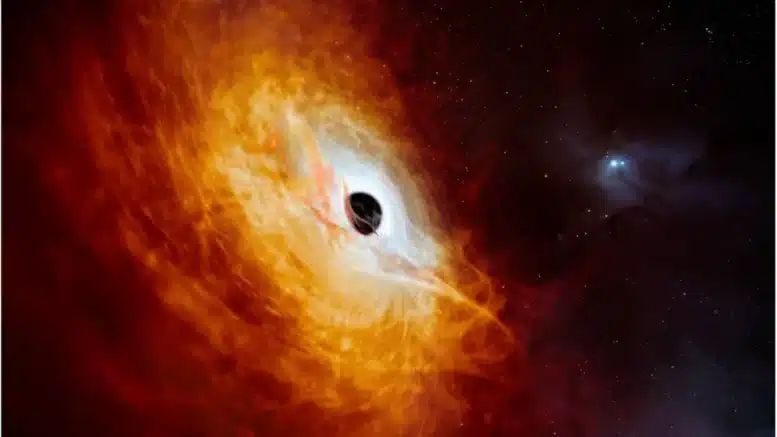In a remarkable discovery, scientists have detected the most luminous object ever observed in the distant reaches of the Universe. This extraordinary entity is none other than a quasar, the brilliant nucleus of a galaxy fueled by an immense black hole, boasting a staggering mass approximately 17 billion times that of our Sun. Designated as J0529-4351, the luminosity of this celestial behemoth was confirmed through observations conducted by the Very Large Telescope (VLT) situated in Chile.
Published in the journal Nature Astronomy, findings from the study reveal the voracious nature of the black hole at the heart of J0529-4351, which devours matter at a staggering rate equivalent to consuming the mass of one Sun every single day. While data on this remarkable object had been recorded years ago, its true luminous glory has only recently been recognized, surprising astronomers like Christopher Onken from the Australian National University (ANU) who worked on the VLT observations.
Quasars, characterized by highly active and energetic cores, are galaxies where a supermassive black hole resides at the center, drawing matter towards it at an astonishing pace. As this material spirals around the black hole, it undergoes extreme acceleration, emitting copious amounts of light that render even distant objects like J0529-4351 visible to us.
Despite its immense distance, the emission from this quasar has traversed a staggering 12 billion years to reach the detectors of the VLT. The sheer luminosity emitted by J0529-4351 surpasses comprehension, with the quasar radiating over 500 trillion times more luminous than our Sun.
Astonishingly, the light emanates from a scorching accretion disk spanning seven light-years in diameter, a dimension that astounds researchers. As ANU PhD student and co-author Samuel Lai notes, this accretion disk represents perhaps the largest of its kind in the known Universe, dwarfing even the distance from the Sun to the orbit of Neptune by a factor of about 15,000 times.

